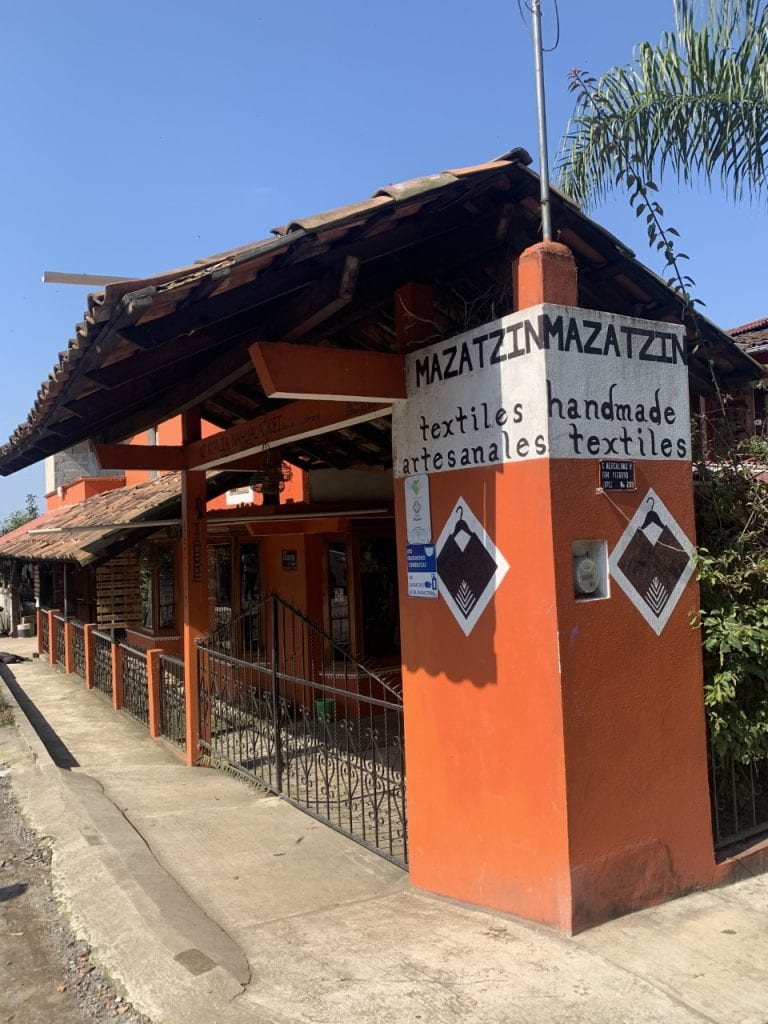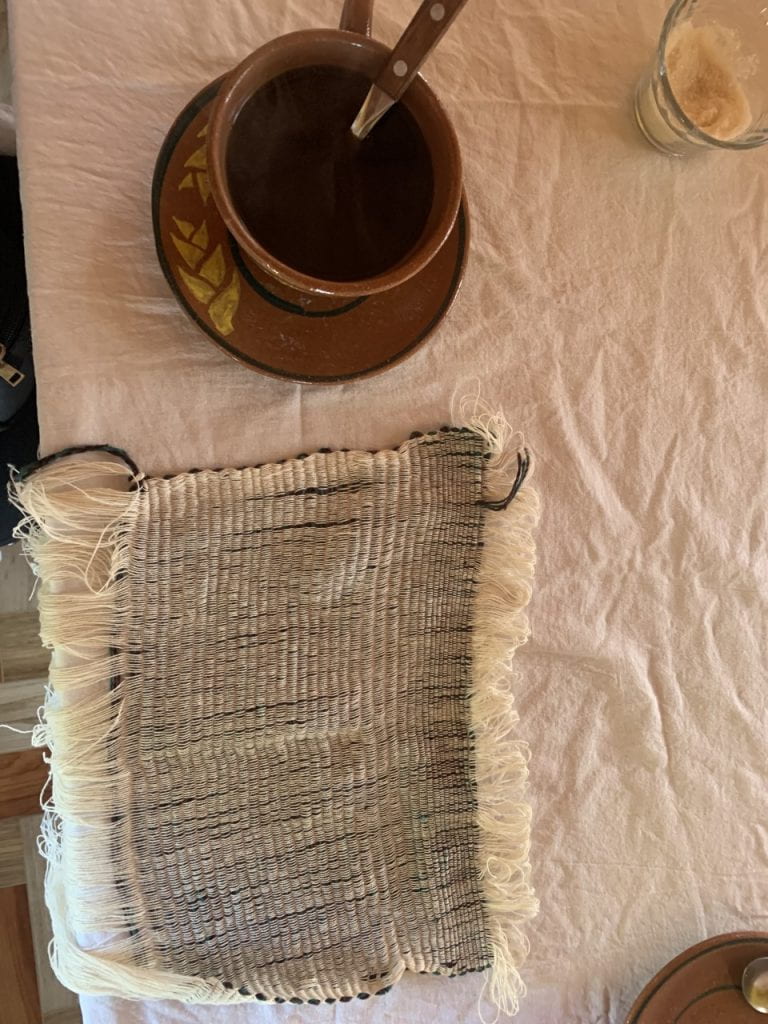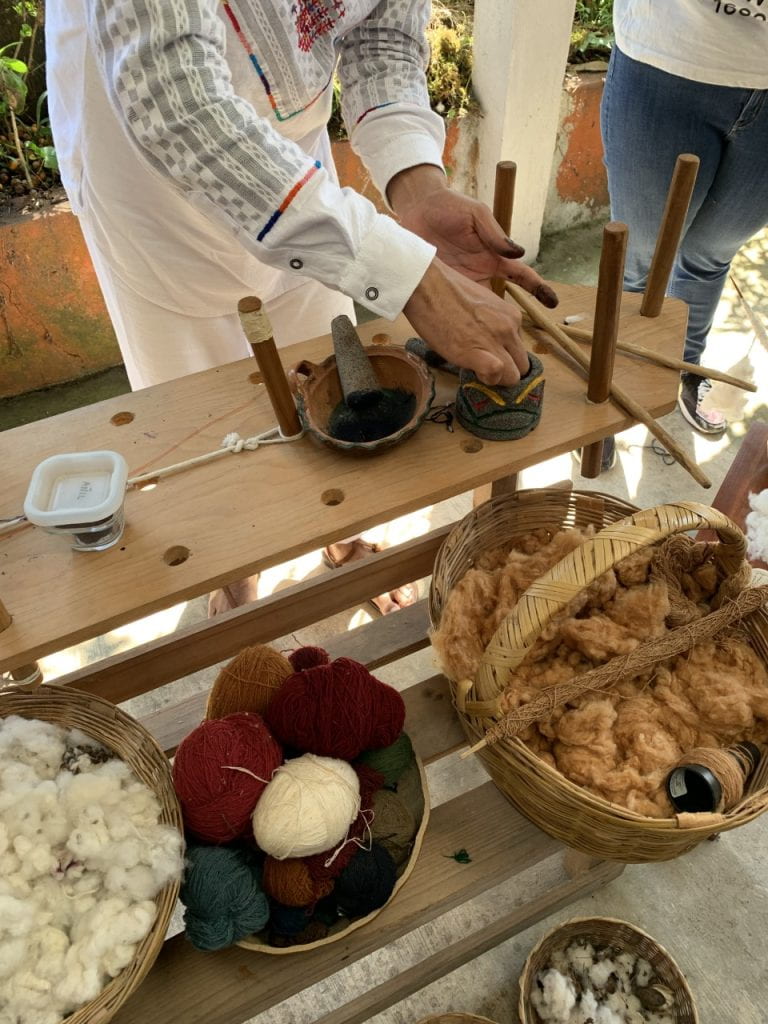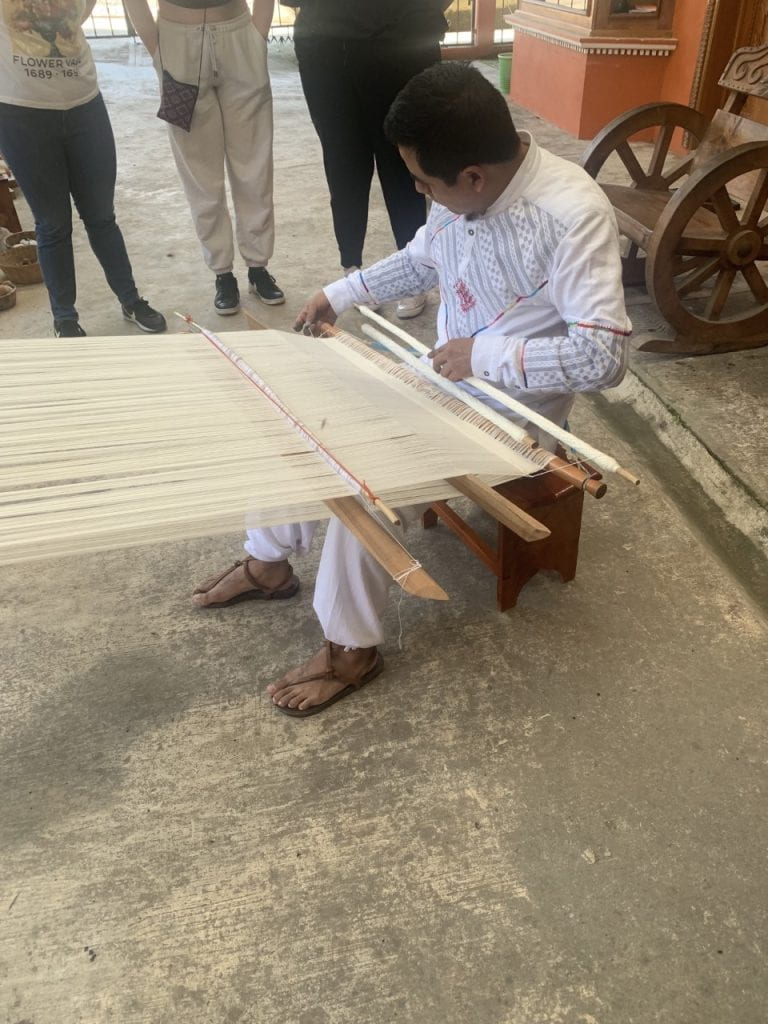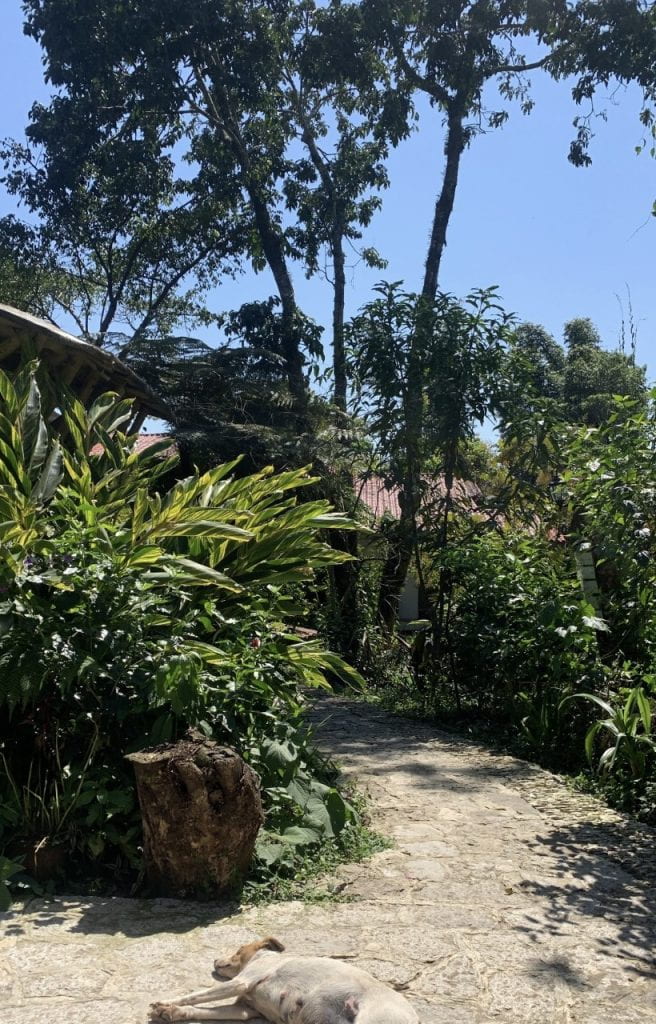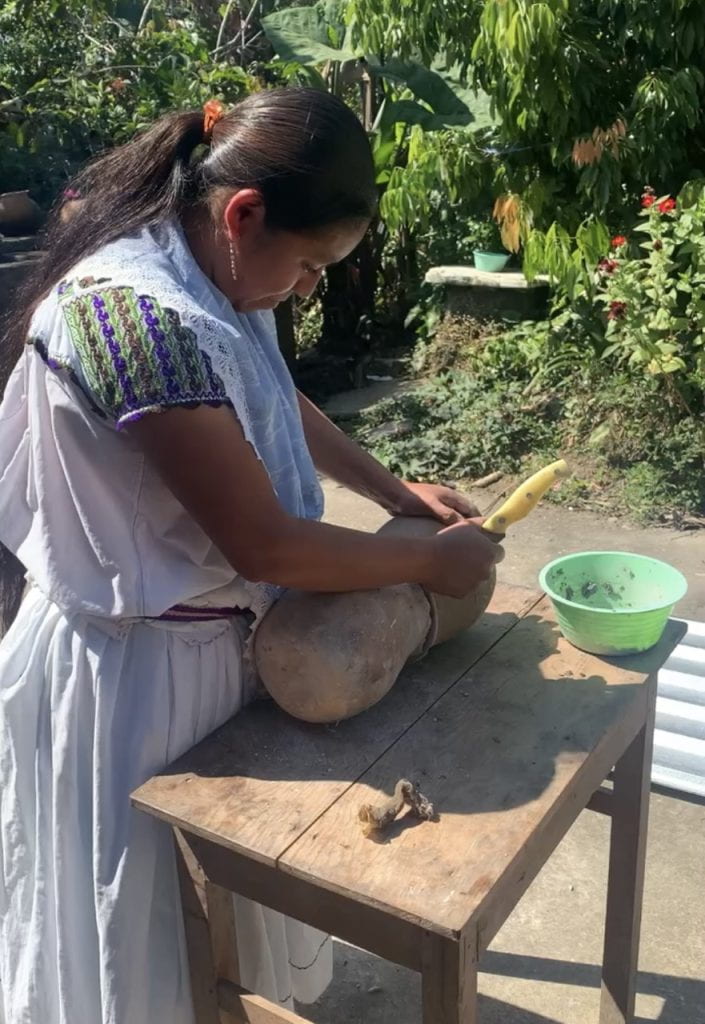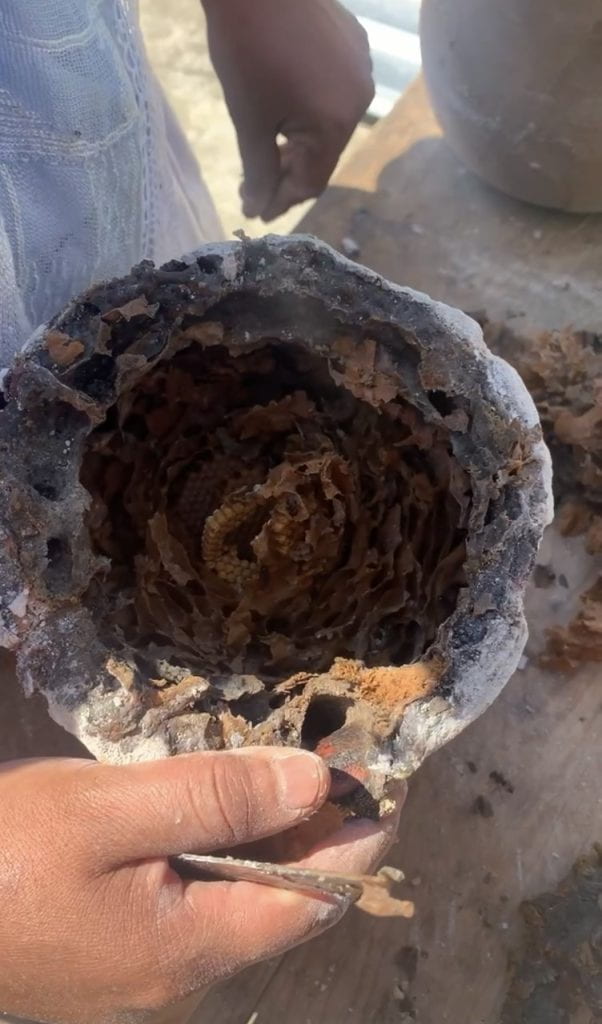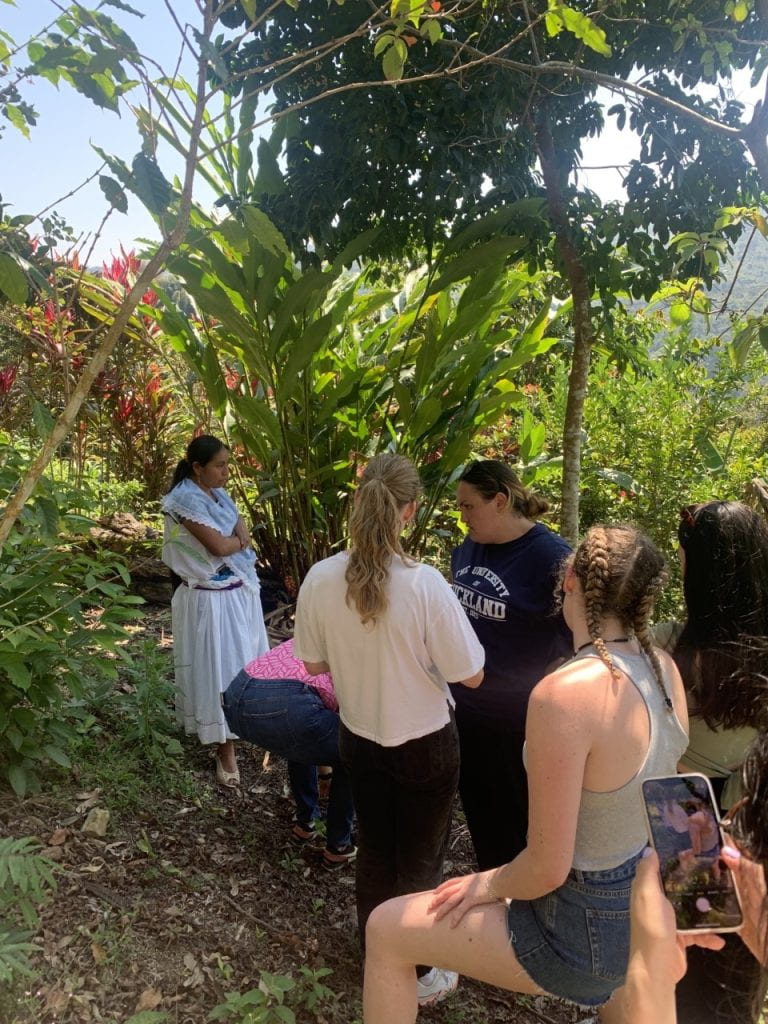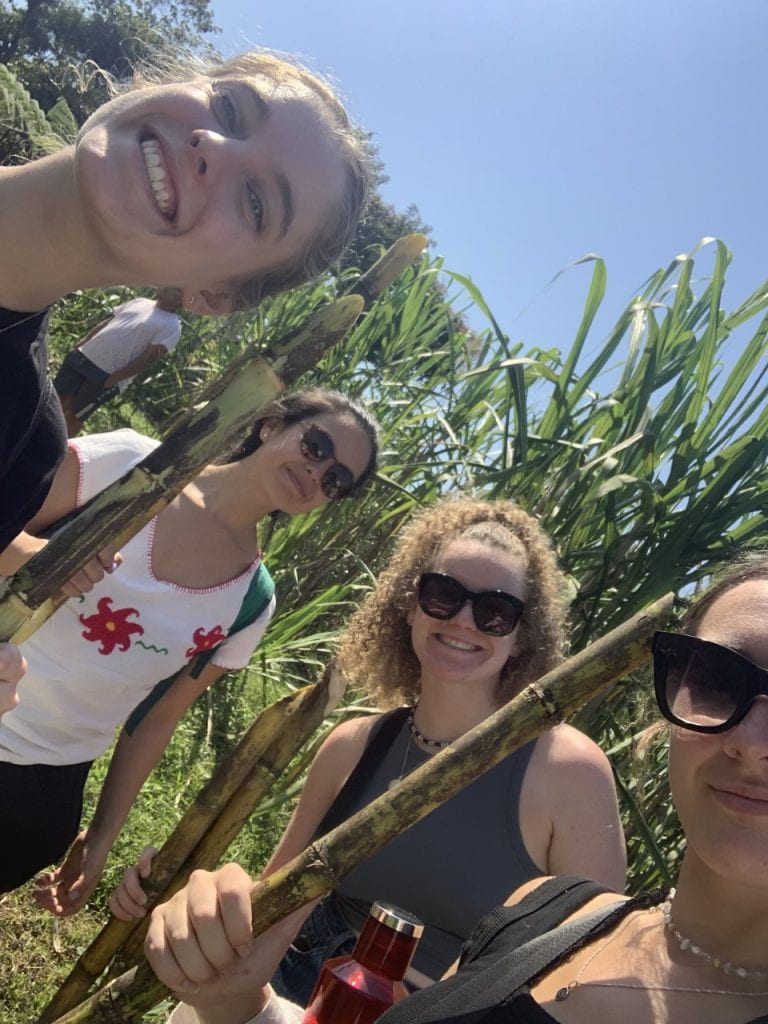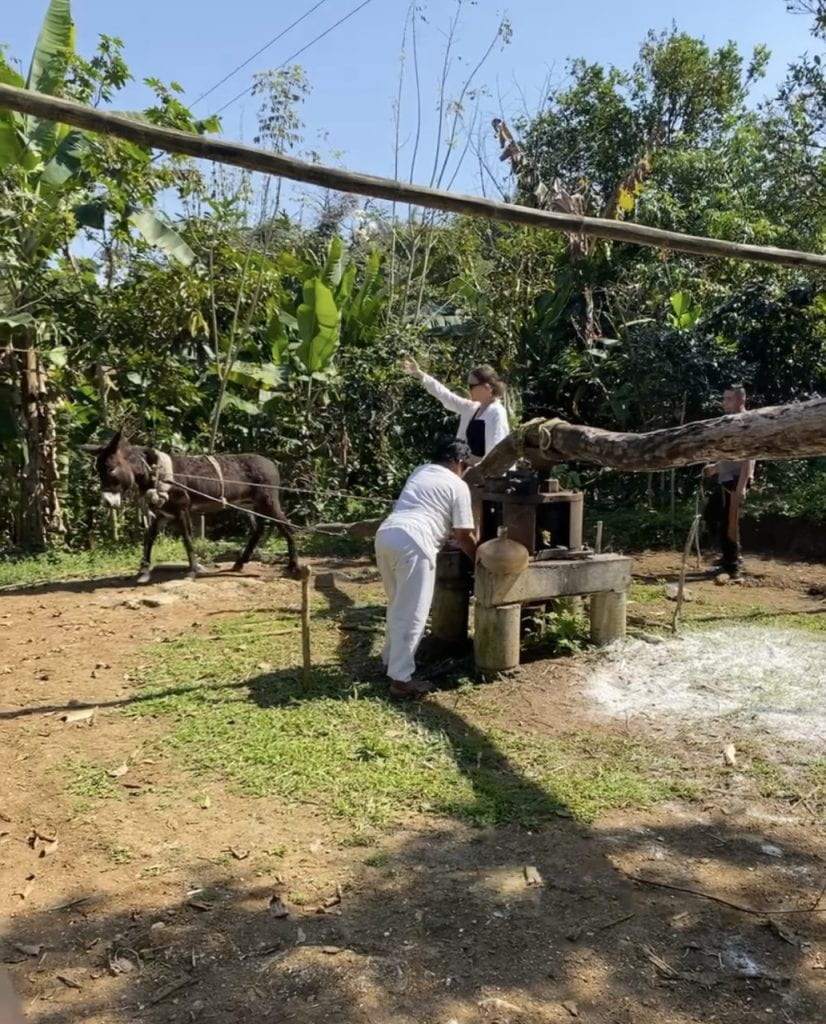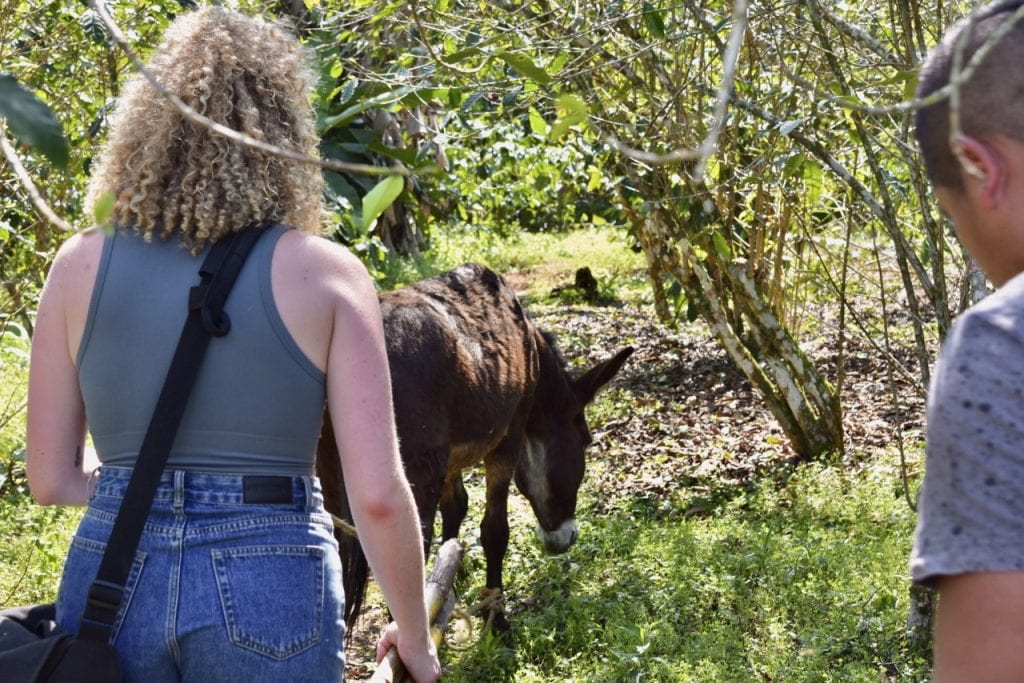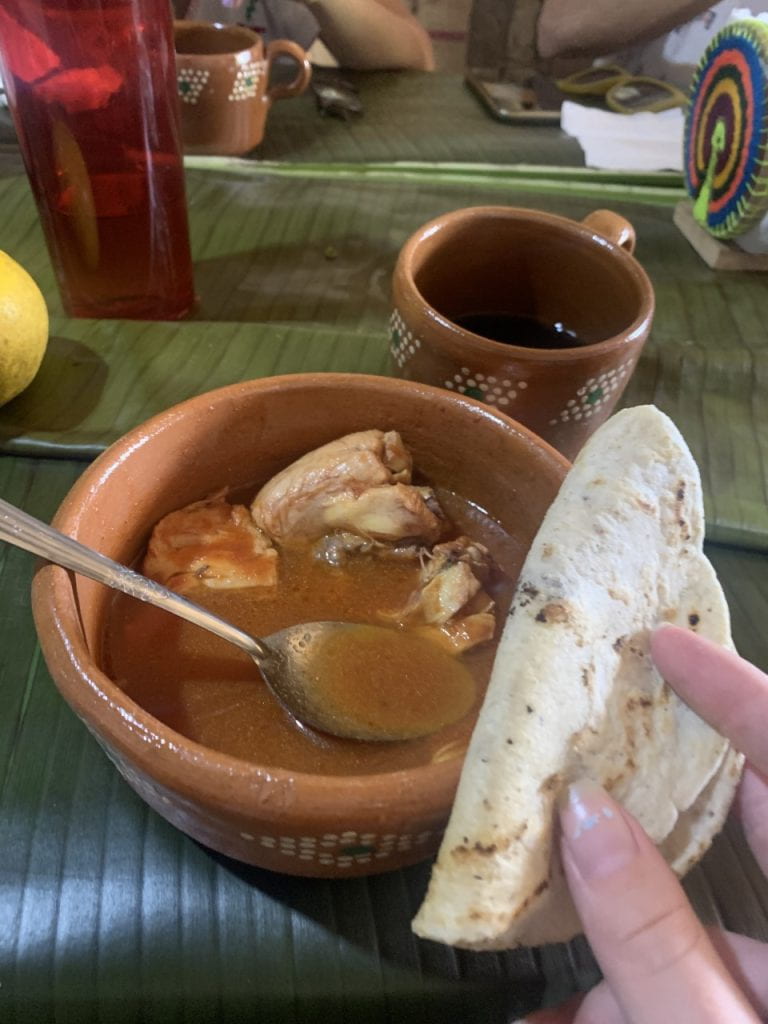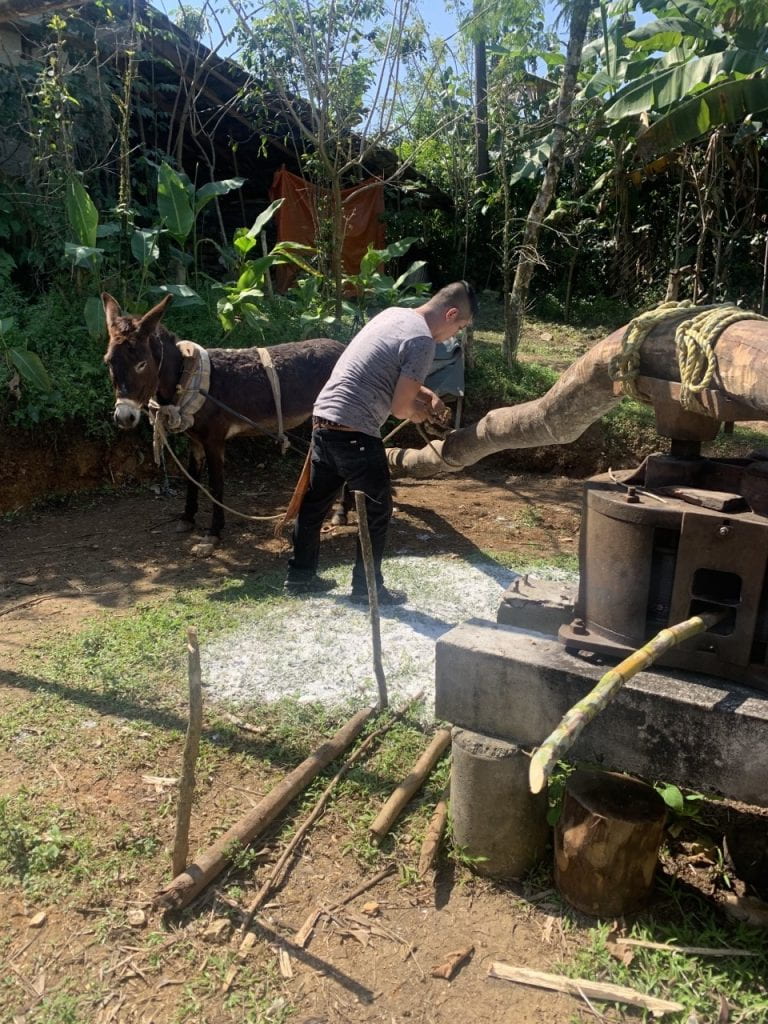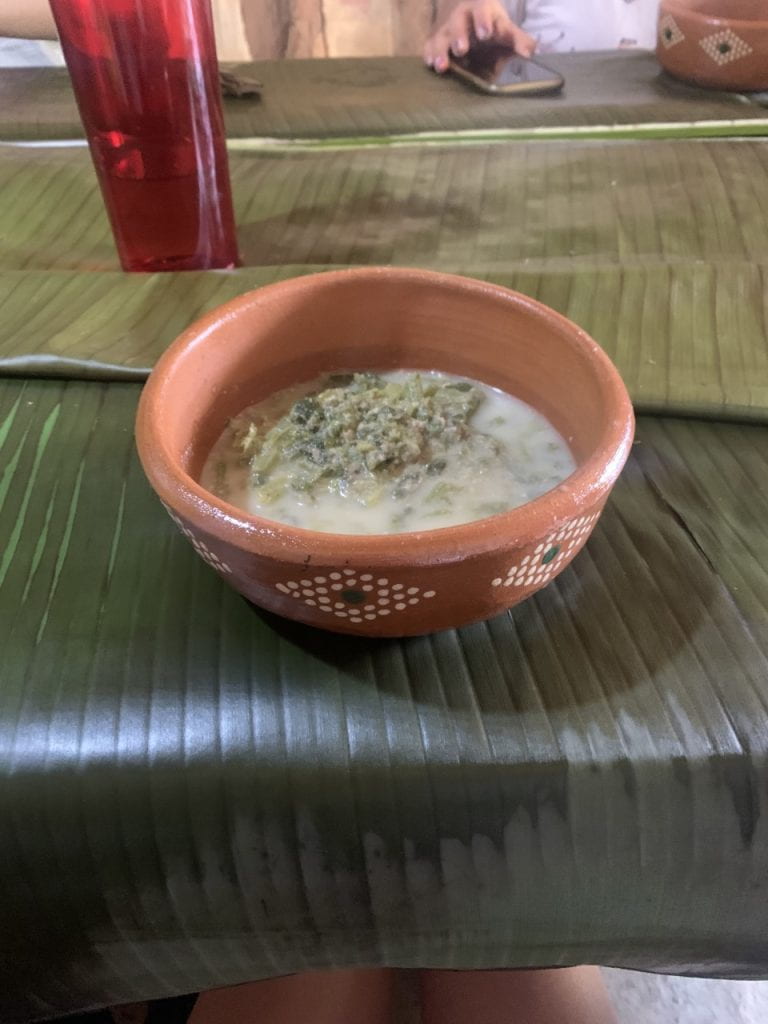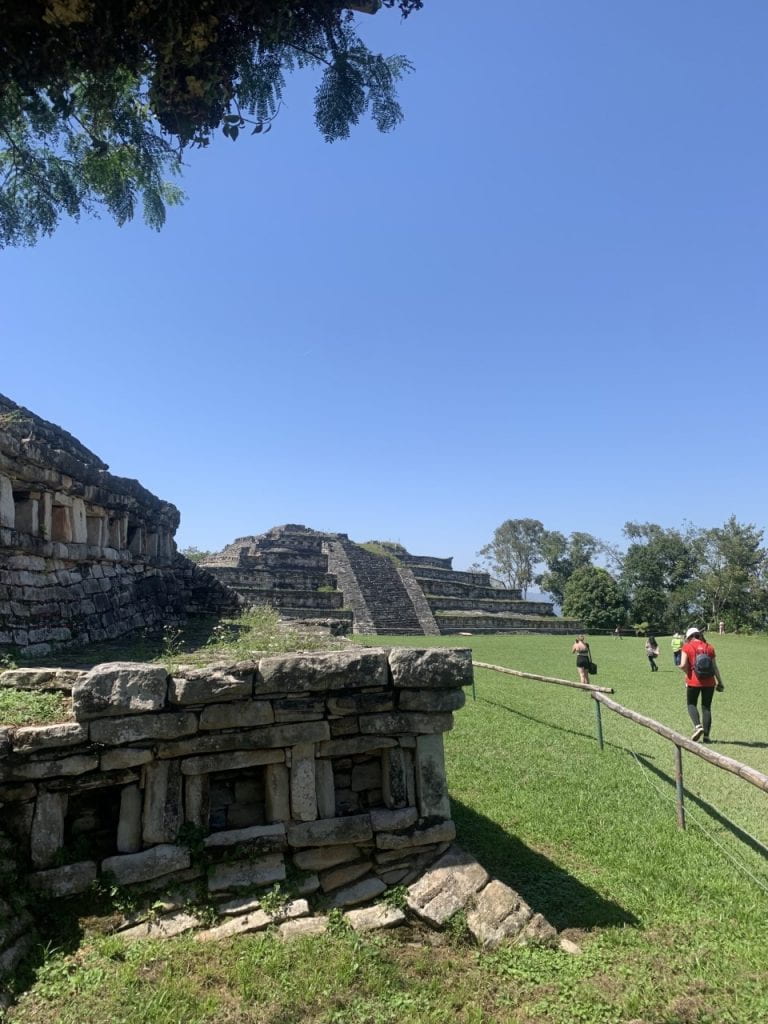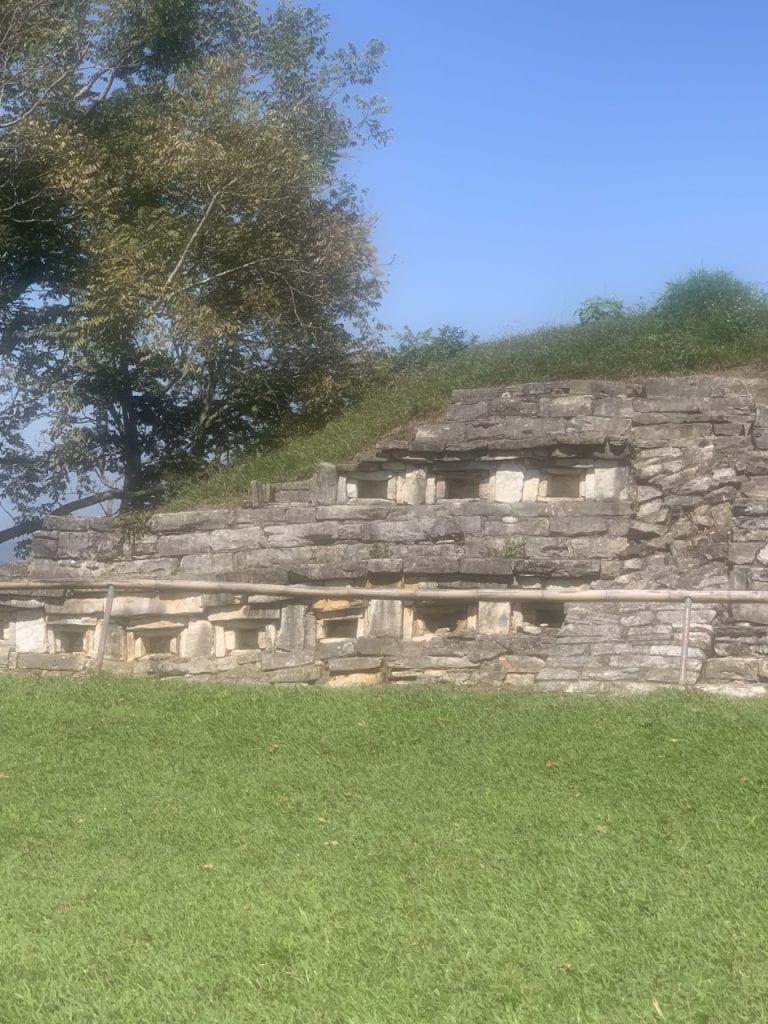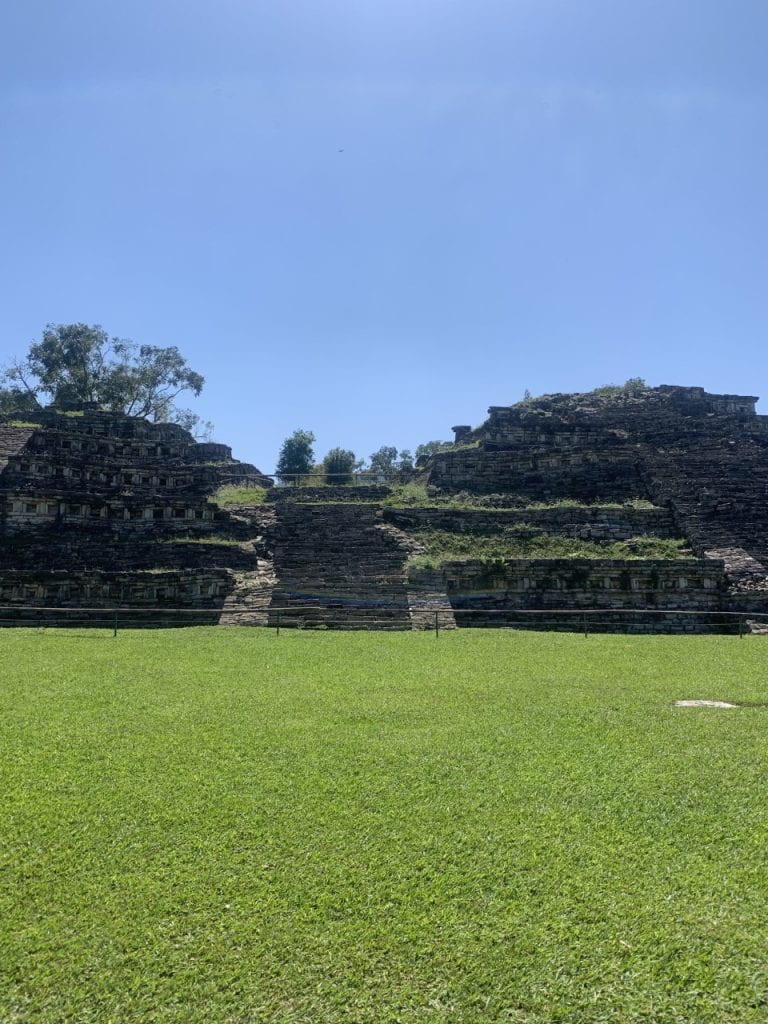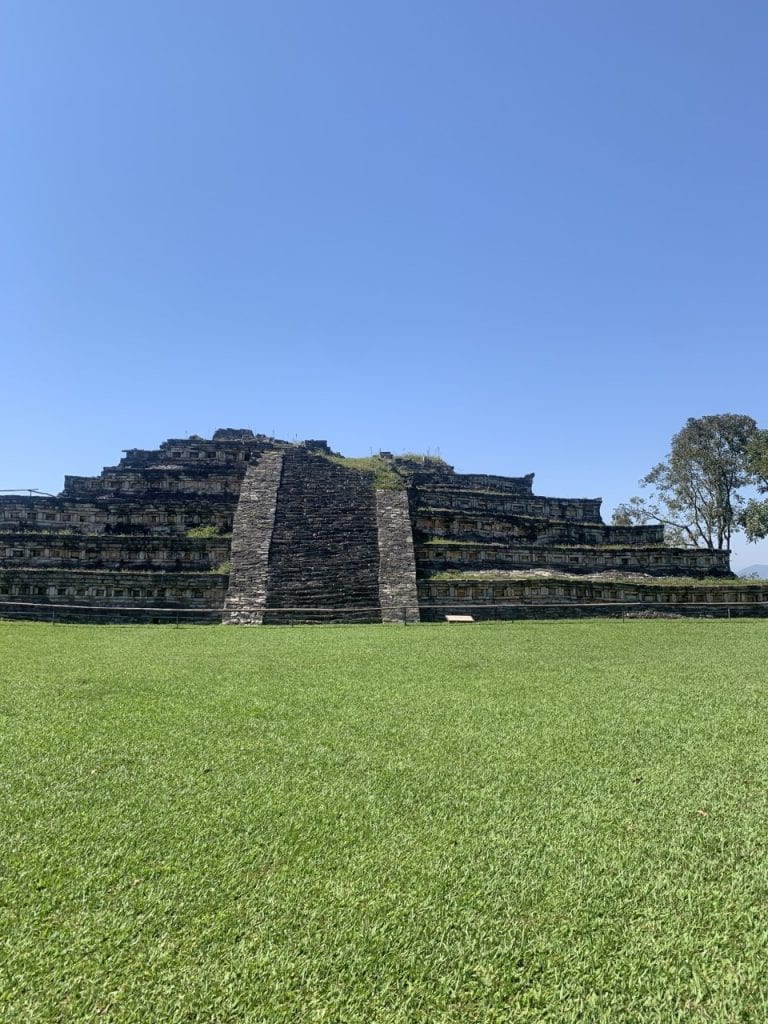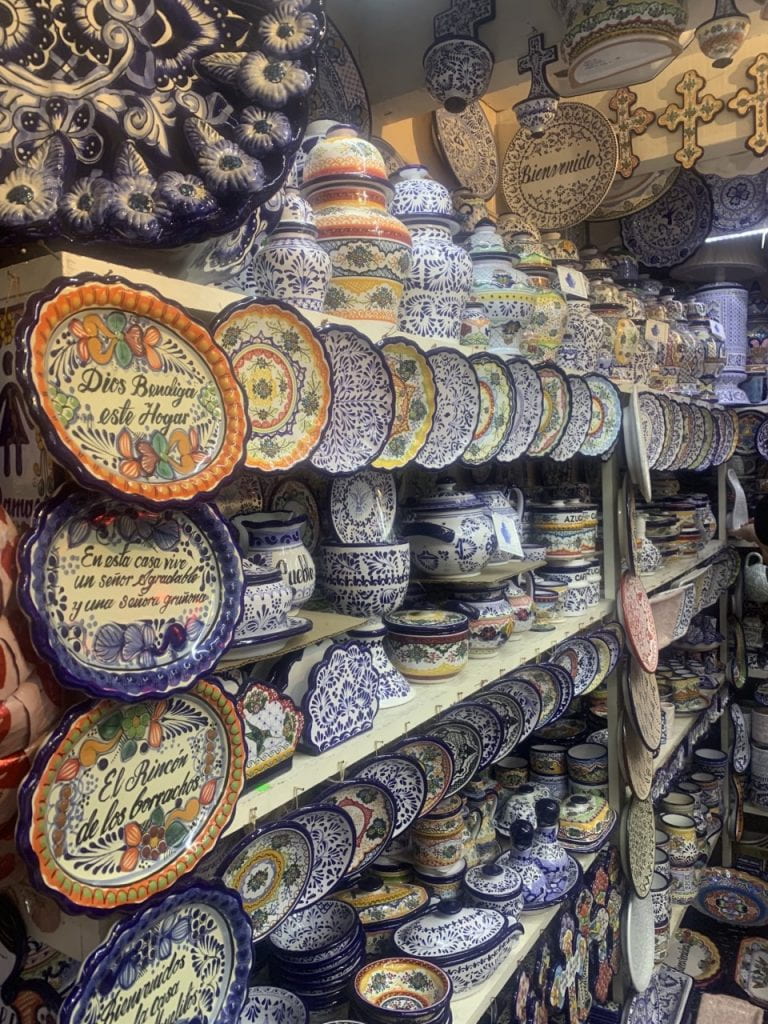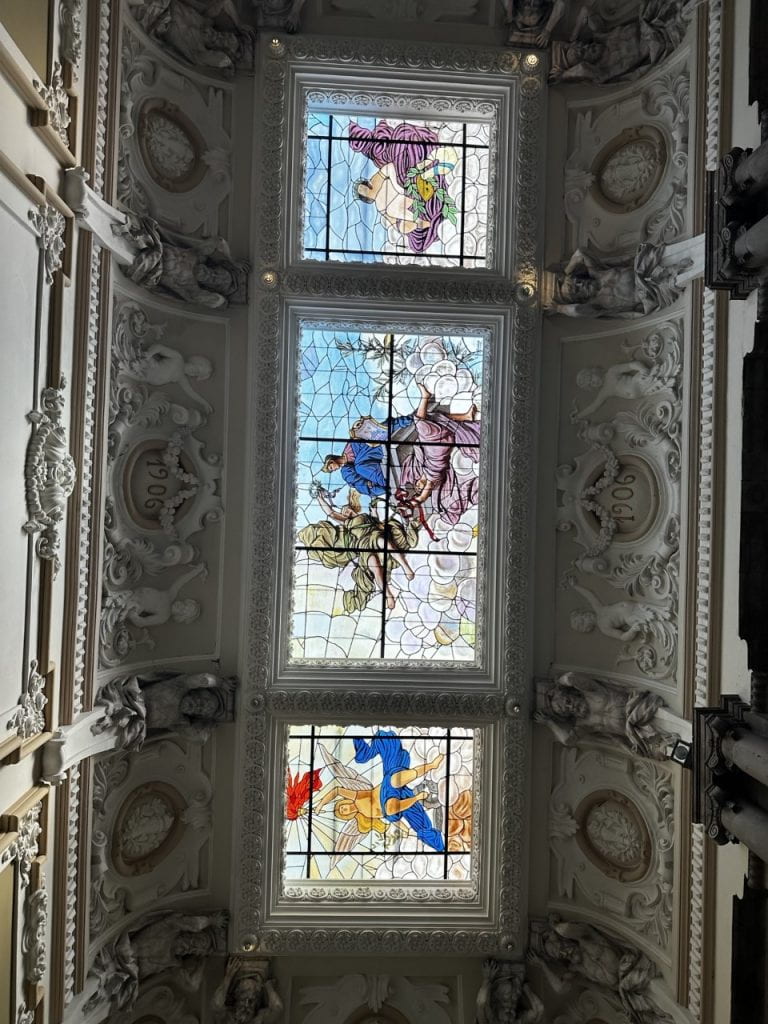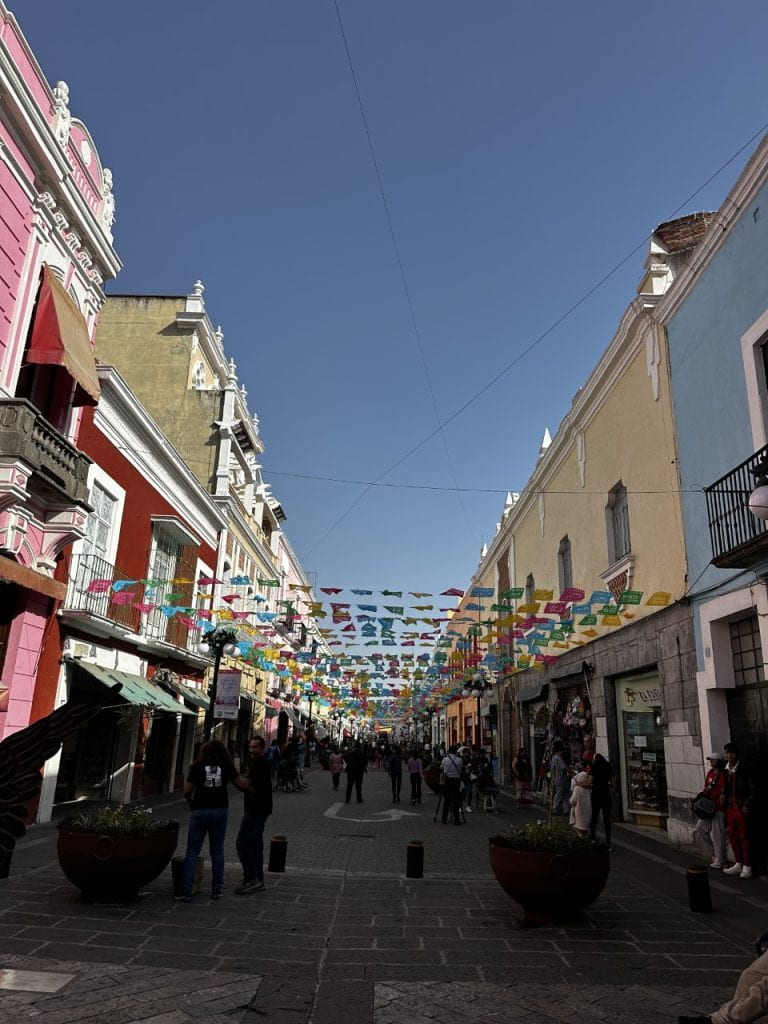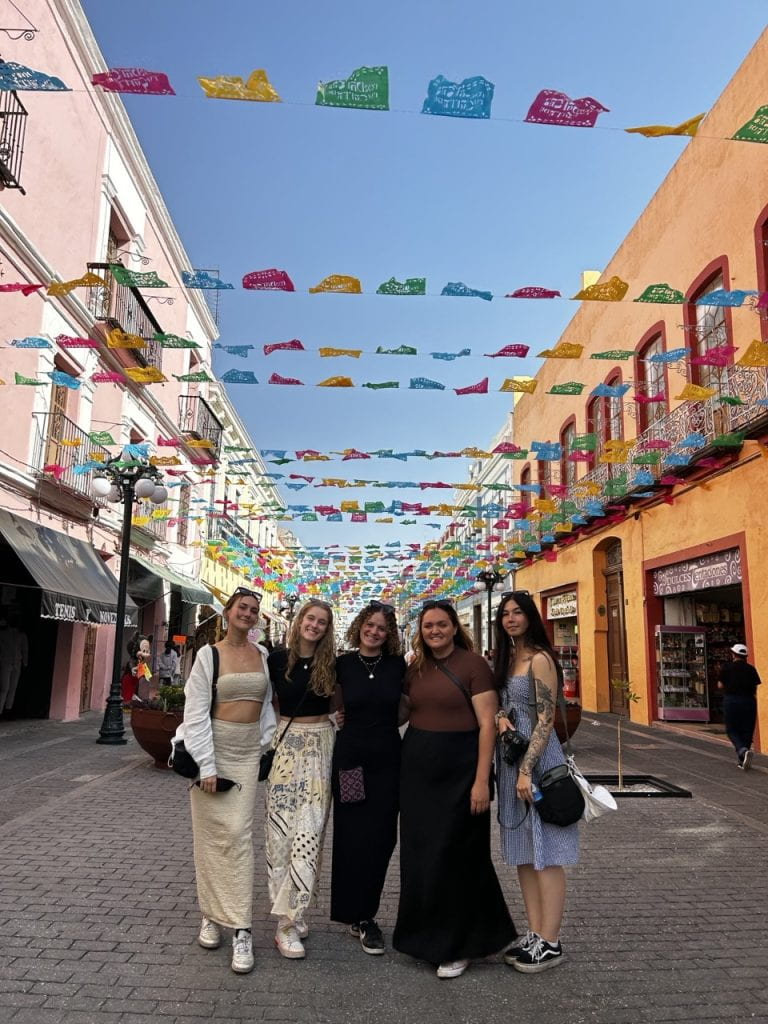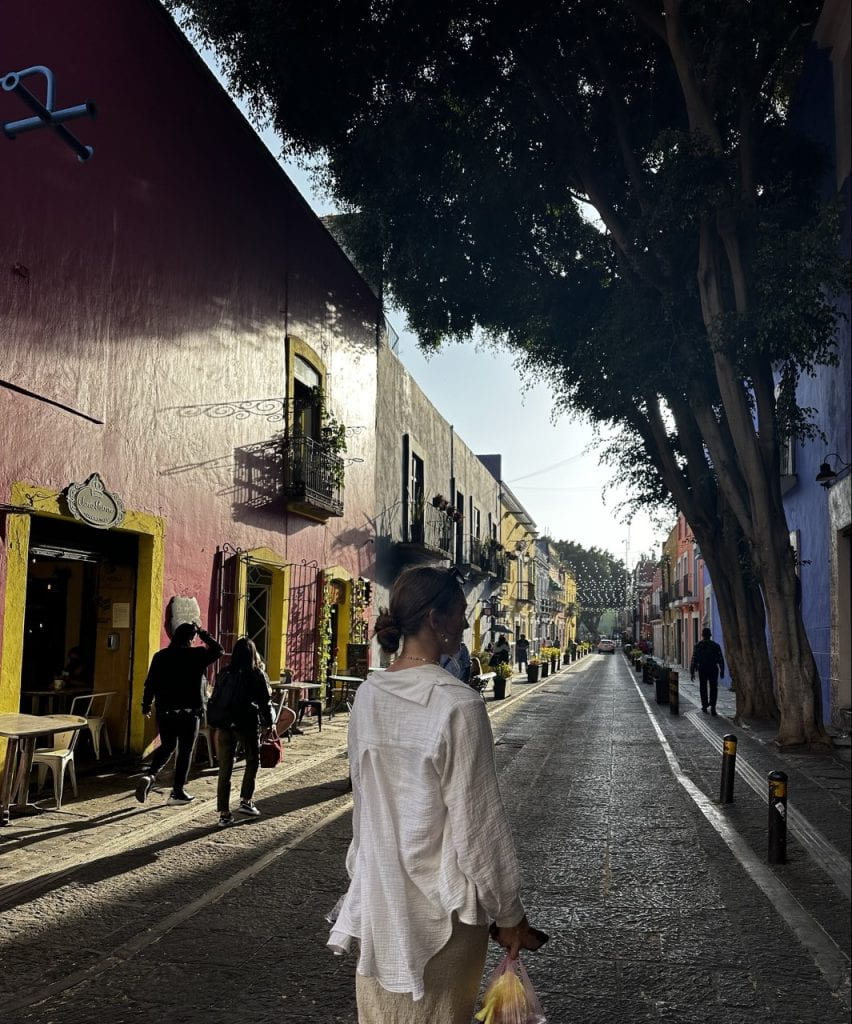Upon finishing up our course work for this programme , we got the amazing opportunity to stay in Cuetzalan for our final week. This part of the trip was a chance to not only experience a different social location of Mexico , but understand indigenous ways of living. The town of Cuetzalan was a gorgeous landmark, remarkable in its sustainable and resourceful ways of living.
El Lunes
The trip began with a 5 hour drive to Cueztlan, located to the North- East of Mexico. During our drive we passed a range of towns , desserts and bushes. Cuetzalan is a remote town that lives amongst the mountain range. It was astonishing to be so far up in the hills while having a range of stores, homes and ecotechnical activities situated in the bush.
Our first activity begun at midday in which we had a textile workshop. We got greeted by the owner of the house and teacher , Pedro Martin Mazatzin. He explained the relationship with his waist looming passion, including how difficult it was to be a male in a female dominated activity . He noted that he has come a long way from being discriminated to being able to teach other males his talent. It was inspirational to hear an individual face gender stereotypes and overcome these challenges. It’s important to note that all workshops we did was taught and presented in Spanish or the Indigenous language. Although it was harder to translate , it was necessary to hear these stories in it’s true emotions , in which required to be expressed in their language. Pedro Martin showed the whole process of waist looming. This included picking cotton from the tree , smashing insects to create colour on the wool , intertwining the cotton into thread then creating a piece of textile. After his presentation, we had the chance to practice this form of textile. To be honest , it was very difficult to do the steps correctly and continuously repeat the process in order to complete the piece of clothing. From this experience , I uphold so much respect for those that work in this industry.
After this difficult but fun experience , we headed to our accomodation for the week. Our huts, including all furniture within, were made from bamboo , concrete and rocks. Not only was our place aesthetically pleasing , but was created from materials within their community. The huts were situated in the middle of the forest , in which you could hear woodpeckers , dogs , roosters and other animals throughout the day and night. It was a completely different lifestyle to what I was used in both Mexico City and New Zealand , and I loved every part of it.
We got introduced to the owner of Tosepan Social Perspective and our guide to future workshops, Octavio. His ancestor was the founder of this place , in which he continued to look after and provide excellent hospitality to future travelers. I not only admired his concern to look after the land his ancestors once owned , but his priority to nourish his home.
El Martes
After the usual Mexican breakfast , which involved tortillas and beans , we begun a tour of our accomodation. Amongst the gorgeous huts, there was gardens and places to fertilise the vegetation that grew around. Other parts of the region we toured included a primary school , University and current construction site. A current project they were building was a meeting hall for the community. This soon to be building was intriguing as it purely was made up of bamboo, in which led to many positive consequences. Instead of iron , steel and concrete , less money was spent on resources which led to more money prioritized for the labour workers. This meant less reliance on importation and focus on creating jobs for the community. Due to the materials being lighter to carry , women were also able to take part in the building of the town hall. This type of inclusivity only provides prosperity for jobs and preventing a labour gap between the genders. The use of bamboo also meant a non-harsh impact on the environment. Not needing to use concrete means no disruption to the environment in terms of mass machines and drills. As bamboo is grown on site and a natural resource , there was no negative consequences to the environment. The building of this town hall highlights a grand example of how this community prioritises prosperity of the people and the environment.

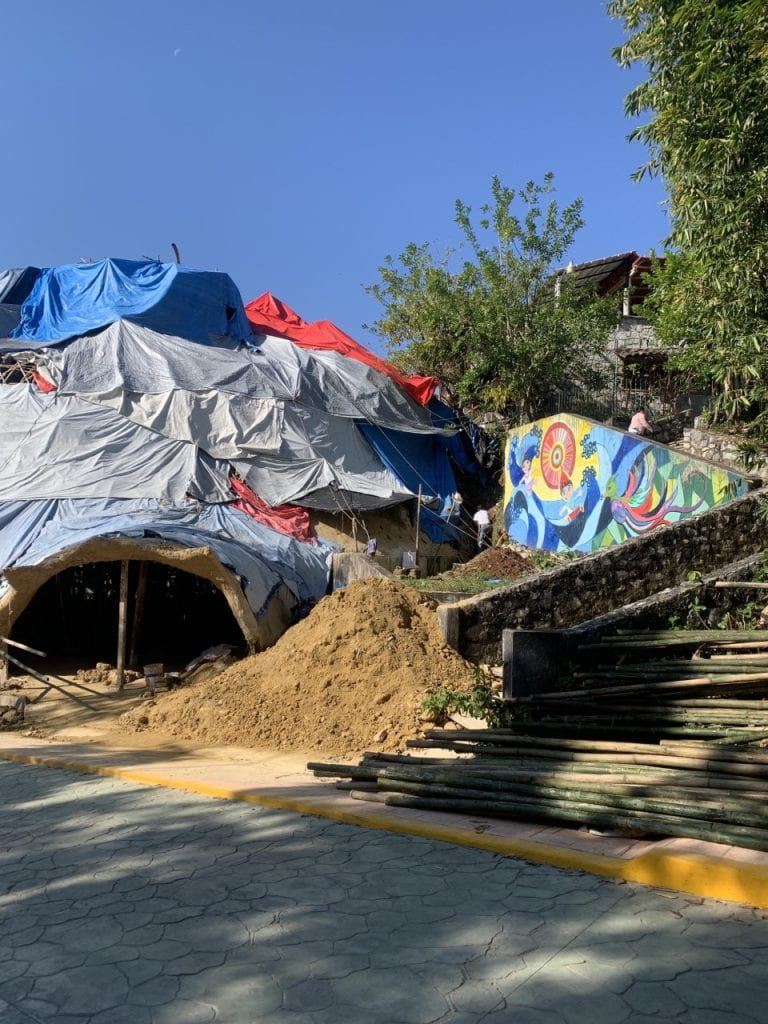
Between the days of Tuesday to Thursday , we had the amazing opportunity to visit communities that specialized in organic ways of living . The visit would include a tour of local family’s house, a home cooked lunch and a day in their working lives.
On Tuesday we got to visit the Reyeshogpan community, an expert farm involved with the organic creation of honey. Our hostel had gorgeous long hair and was wearing her beautiful traditional indigenous clothing. Through this experience we also got to hear the family’s mother tonge, an important factor of their culture. She showed us around her garden , in which was slanted on a hill and had many different types of plants. This included mint lemon cinnamon lime orange and chilis. The expert family had up to 20 beehives within their home , with all hives being created through their pottery skills. She begun to show us what happens when a beehive is ready to reproduce its honey. In order to access the honey, the expert had to cut open the hive in the area she originally put ash and concrete to seal it.
In this particular honey pot , majority of the honey was dried up. The bee expert explained that they linked this rare occurrence to an idea that Aztecs believed when studying bees way back. In which when someone has passed away , bees will stop working within the hive, causing majority of the pot to clog up with very dry honey. This was interesting to hear as our indigenous group , Maoris , have a similar belief when a Fantail flies within your home. It shows the important link between nature and death, rooted within historical and Indignity beliefs.
From each bee pot , they group produce 1 quarter of a litre of honey. When trying the honey , it tasted like nothing I had experienced before. The honey held the usual sweet flavor but had a strong tinge of citrus to it. This is due to these particular bees taking their pollen from the oranges on their farm.
After our tour and creation of honey. The family was very accommodating and provided us lunch. We had a green soup created from fruit within the garden , chicken brothel and a mass amount of tortillas. The way this food was created and tasted was completely different to our usual meals in New Zealand. I tend to be a picky eater but I’m glad I stood out of my comfort zone because all the meals we had at this house was delicious.
El Miercoles
Wednesday begun with one of my favourite parts of the Cueztlan trip, and the waterfalls of Las Brasas. Walking to the waterfalls was interesting as it felt like I was back in New Zealand. With fresh air, lots of bush and ferns covering majority of the path. Both waterfalls were stunning and peaceful. Although the water was freezing at first , it felt so refreshing once you were in. As New Zealand is an island , there has always been opportunities to swim. Whereas In Mexico this was one of the only chances we got to be in the water.
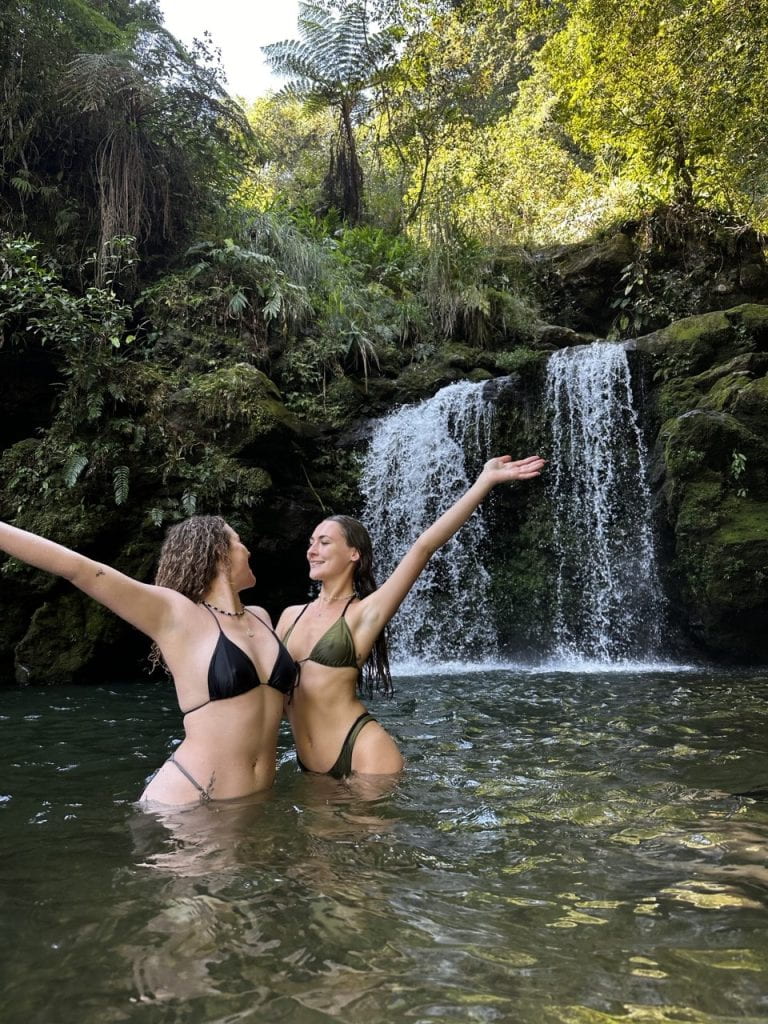
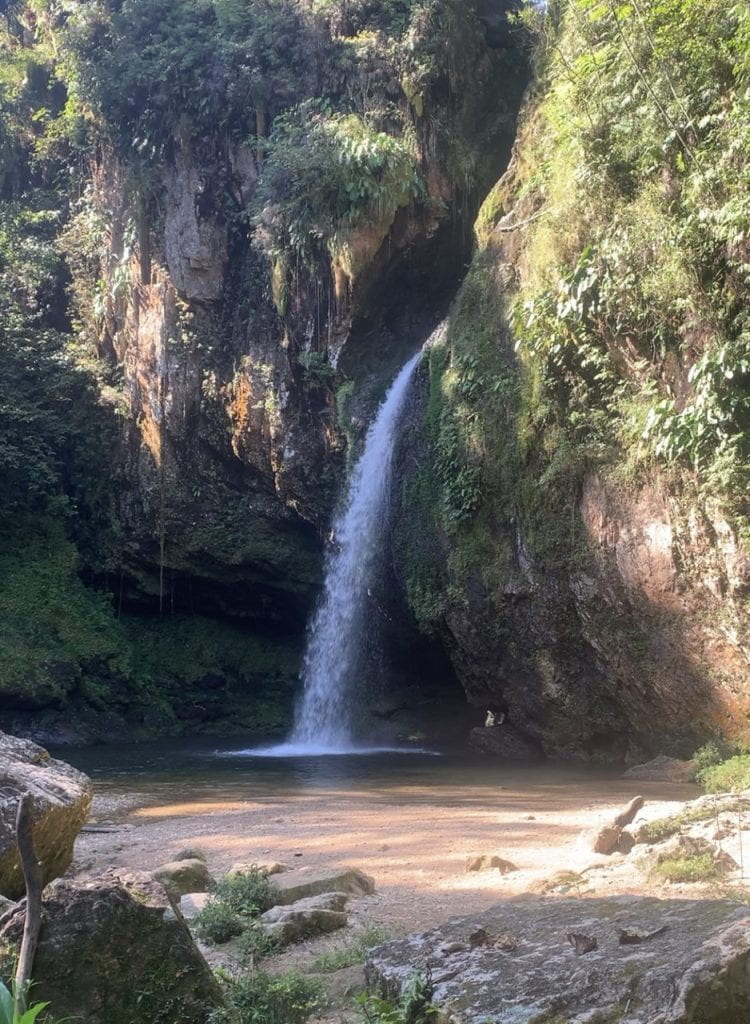
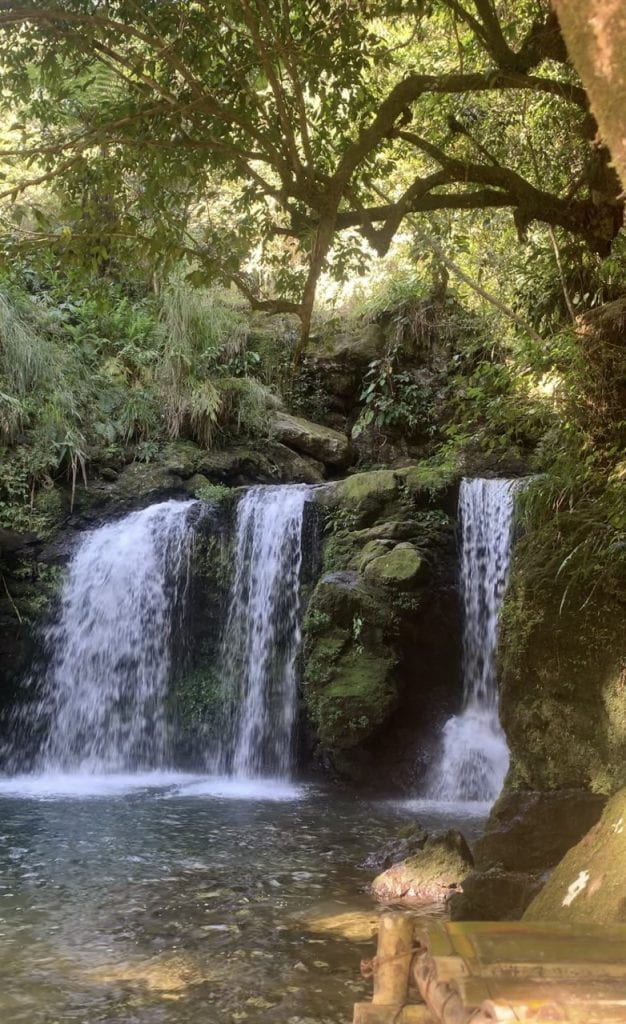
For our Wednesday home visit we went to a families home that produces sugar, also known as The Talzintan Community. After introductions , we were taken down to a massive sugar cane farm. We got the chance to experience the process of creating sugar, in which begun with cutting down sugar cane trees. The expert got us to try the cane straight from the plant, in which tasted extremely chewy but very sweet. With us all holding a part of the cane we just cut down , we took it up to the home for it to be produced alongside the donkey.
The donkey is called Guamito, and he has been blessed by the family on several occasions. This is due to Guamito being a significant factor to the production of sugar. He is the prime mover of the machine that creates the sugar cane to turn into liquid. As shown in the photo below , the device looks very much like a sew saw. The donkey is attatched to this device and continuously walks around in a circle, causing the sugar cane to be broken down into liquid. We all had the chance to either help the donkey or be the donkey pushing this machine around. It was very tiring and that was from only doing 2 canes of sugar. It made me realise the amount of dedication from communities and animals in order for us to have a basic commodity such as sugar.
After producing the sugar into liquid , the expert tend to put a massive lump sum of liquid within an oven. It takes up to 8 hours for the sugar to be separated from the water , creating the sugar we know well from our coffees. The family highlighted that their usual routine consisted of cutting the canes and producing the liquid between the times of 2am to 8am, then cooking the sugar between 8am to 4pm. Working a 14 hour day was impressive to hear , something that was seen as a normal reality for these experts. Once the sugar was produced , 2 cups of this sugar tended to sell for 30 pesos (about 2.50 NZD). With the amount of sweat and tears put into this type of work , I would of hoped they would of been recognised better for their hard work within their income gain.
El Jueves
Our morning activity for Thursday was visiting the “Grutas Los Corales” caves. Where we parked for the caves was astounding, you could see a variety of mountain ranges in the distance and an entirely different indigenous community and village from this viewpoint. The caves consisted of different rocks looking like everyday components in our lives , which included a cat, Santa clause , the World Cup , ice cream and much more. We had the chance to climb down backwards off a rock using a rope. For me in particular , I found this difficult because I had not done something similar to this before, let alone in a dark cave. Once we reached the bottom of the cave , we had the chance to do mud face masks. Although it felt wrong , all of our skin felt very soft after this experience.
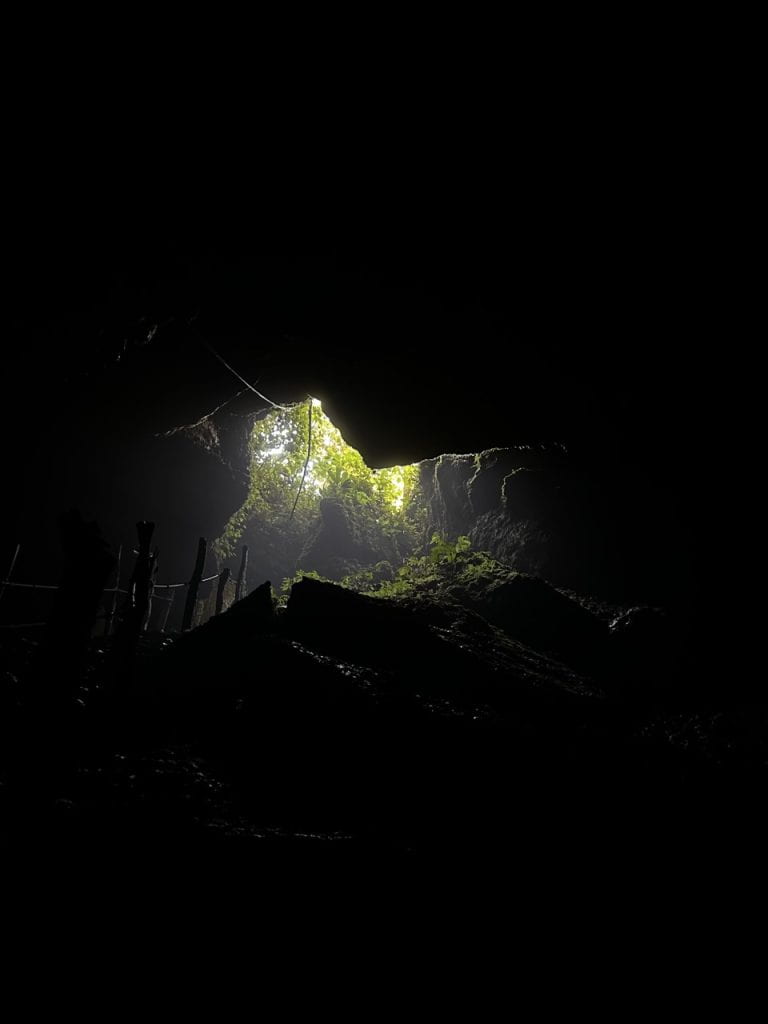
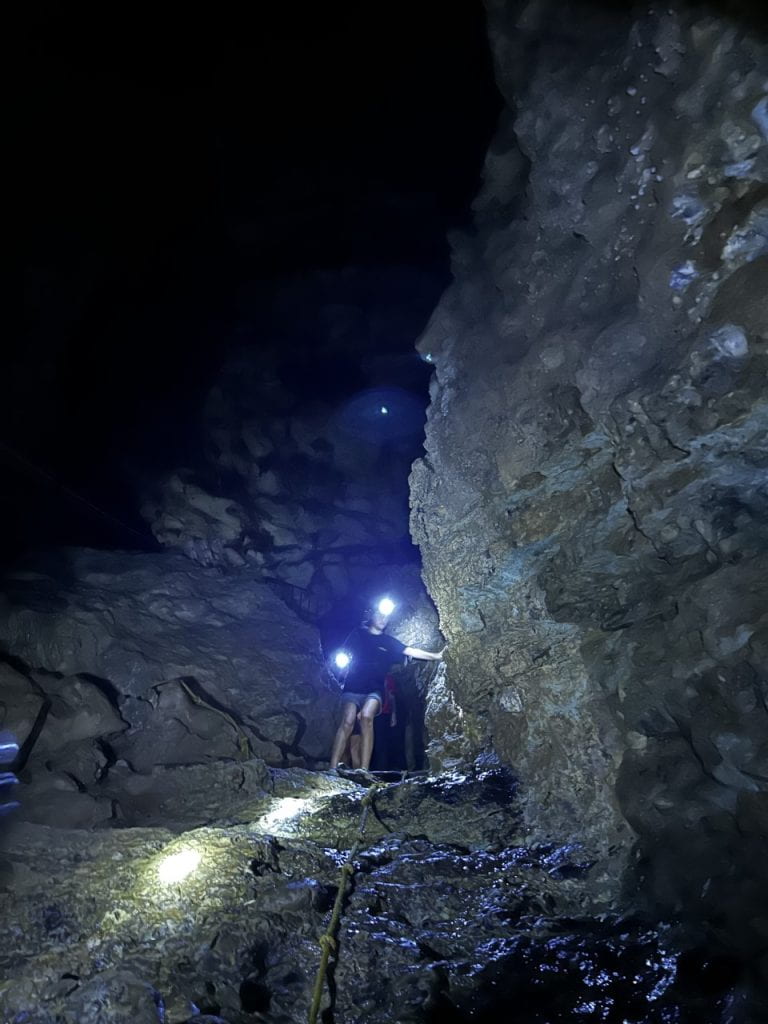
After the caves , we visited the Archeological site of Yohualichan. Like other pyramids we had visited in Mexico , these were ceremonial sites rather than places they lived in. Living here between 200AD- 800AD, the Nishes were known for the entry into the underworld , while also signifying duality (death , life , dark and light).
The photo below shows the valley of tetocaban; in which represented the heart of Mother Earth. There was four pyramids within this valley, that represented multiple meanings. The number four represented 4 directions , 4 elements , 4 colours of corn and 4 flying men. The direction of the North represented the white coloured corn and the element of wind, this was also known as the region of death (miclampta). The direction of the East represented the red coloured corn and the element of fire. They believed that when people died from war or disease , they went to the east where the sun rises. The West represented the element of blue and the colour of blue. The direction of West also represented the region of women, meaning that when women passed due to birth, their souls went to the West. The final point, the South, represented the yellow corn and the element of Earth. It was believed that connecting all these canals together presented the entry to the underworld within the middle of this valley.
It is evident in the photos that the North and South pyramids had hive shaped windows, this was purposely made to represent the access to the underworld. For this community, the underworld was positively perceived as a second life after living on earth. The negative connotation of the afterlife being seen as ‘hell’ was brought by colonists , who perceived their beliefs as wrong. It was interesting to learn beliefs of the afterlife from a completely different perspective , and how significant it was to people that once lived on this Archaeological site.
El Viernes
The last day of our trip ended with a visit to Puebla, a well known ‘Pueblo Magico’ (Magical Town) of Mexico. It was very sad to leave Cuetzalan, I had fallen in love with this remote town. I admired the sustainable ways of living, beautiful buildings and amazing people.
After a 2 hour drive, we arrived at the colourful magical town. We were lucky to get a tour of the city through a friend of Natalia and Andrea. I had never seen so many buildings with a variety of colours until this tour. We had the chance to visit a street that purely sold candy. This was a great opportunity to buy gifts for loved ones back at home and try Mexico’s specialties within lollies. The next street , which was my personal favourite, all sold talavera. This mexican pottery is a type of glassware that is usually painted in the colours of blue and white. There was a whole range of talavera available to buy, from jewellery , kitchenware , crosses and so much more. I can definitely say that the majority of my money was spent on these beautiful pieces.
Upon our drive back to Mexico City, we passed the La Mujer Dormida (the sleeping women). This is due to the shape of the mountain looking like a woman sleeping. Also known as Popopcatepelt, this mountain range also has an active volcano. As we were passing by , the volcano began to smoke up. This was intriguing to see as I had never personally experienced an active volcano, and it was a beautiful site to see. It was also intriguing to note that the story behind the La Mujer Dormida was very similar to Ranginui and Papatuanuku stories in Maori mythology.
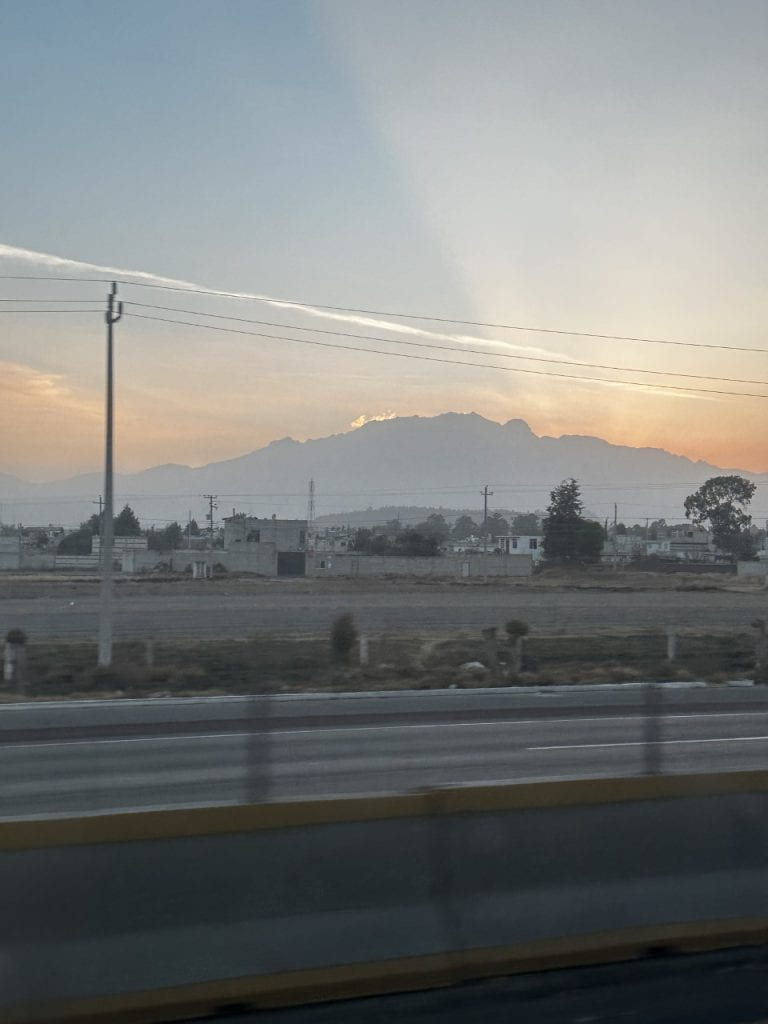
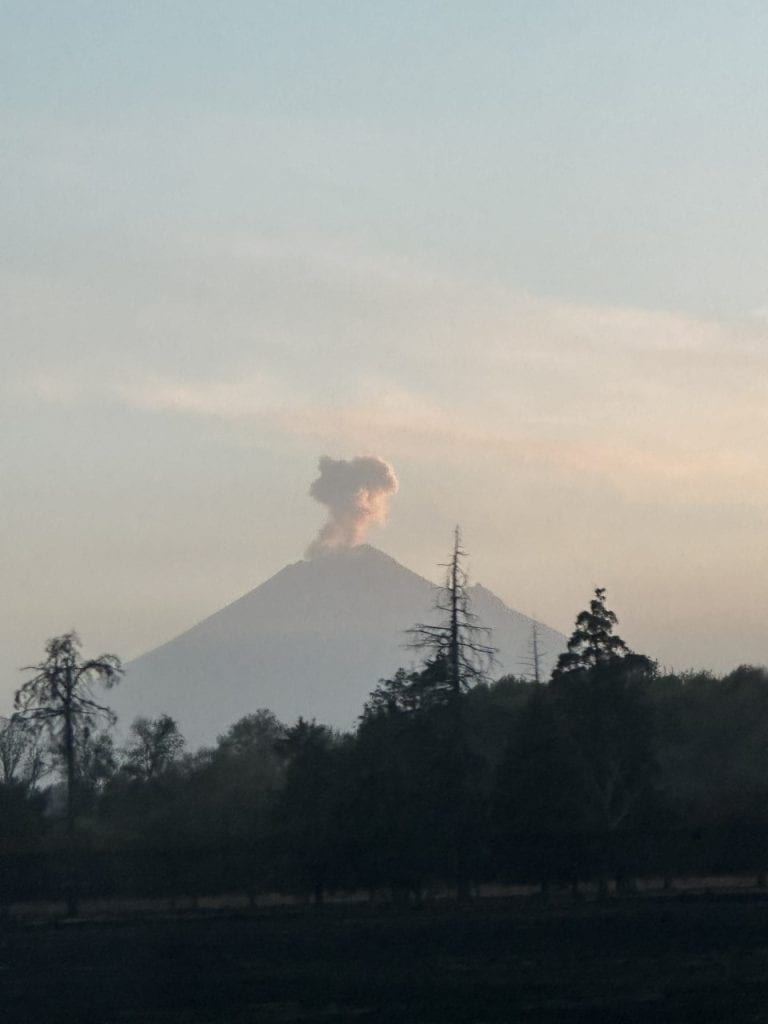
Saying Our Goodbyes
Not only was this our final day of Cuetzalan, but the last day seeing our coordinators. Although I have not mentioned Natalia in my previous blogs , she was an amazing contributor to this entire trip. She was not just our coordinator , but our Mexican mum and best friend. She supported all of us students throughout the trip and was always great fun to be around. Natalia would take us on our visits to NGOs and stop by class with her bubbly attitude. While saying our teary goodbyes to our Mexican mum, she provided something that will stick with us forever. Natalia highlighted that the majority of the content we learnt involved daily struggles of people living in Mexico. Amongst all the social realities, she noted that “we still find colour in our lives and within the city itself”. She told us that throughout all the hardships in life , we can still remain colourful and find glimpses of hope. Natalia wished that we brought this colour back to our home and within the work we do for our future careers. The ray of sunshine that Natalia was for us students is something I hope I can be for people in the future.
It was interesting to reflect how much I grew within my time here in Mexico. When I first arrived, I had the initial nerves and upheld the preconceived idea that Mexico was dangerous. Yet upon departure , I was heartbroken to leave a city that felt like home. The colours upon the buildings reflected the beauty of everyone I met within this city. I fell in love with every aspect of Mexico, from the food , culture ,art, and history. Studying these past 7 weeks have reminded me exactly why I love my degree and what type of career I want out of it. I can not wait to visit Mexico again and build upon these bonds. I also can not wait to provide future colours of hope to those that need it.

